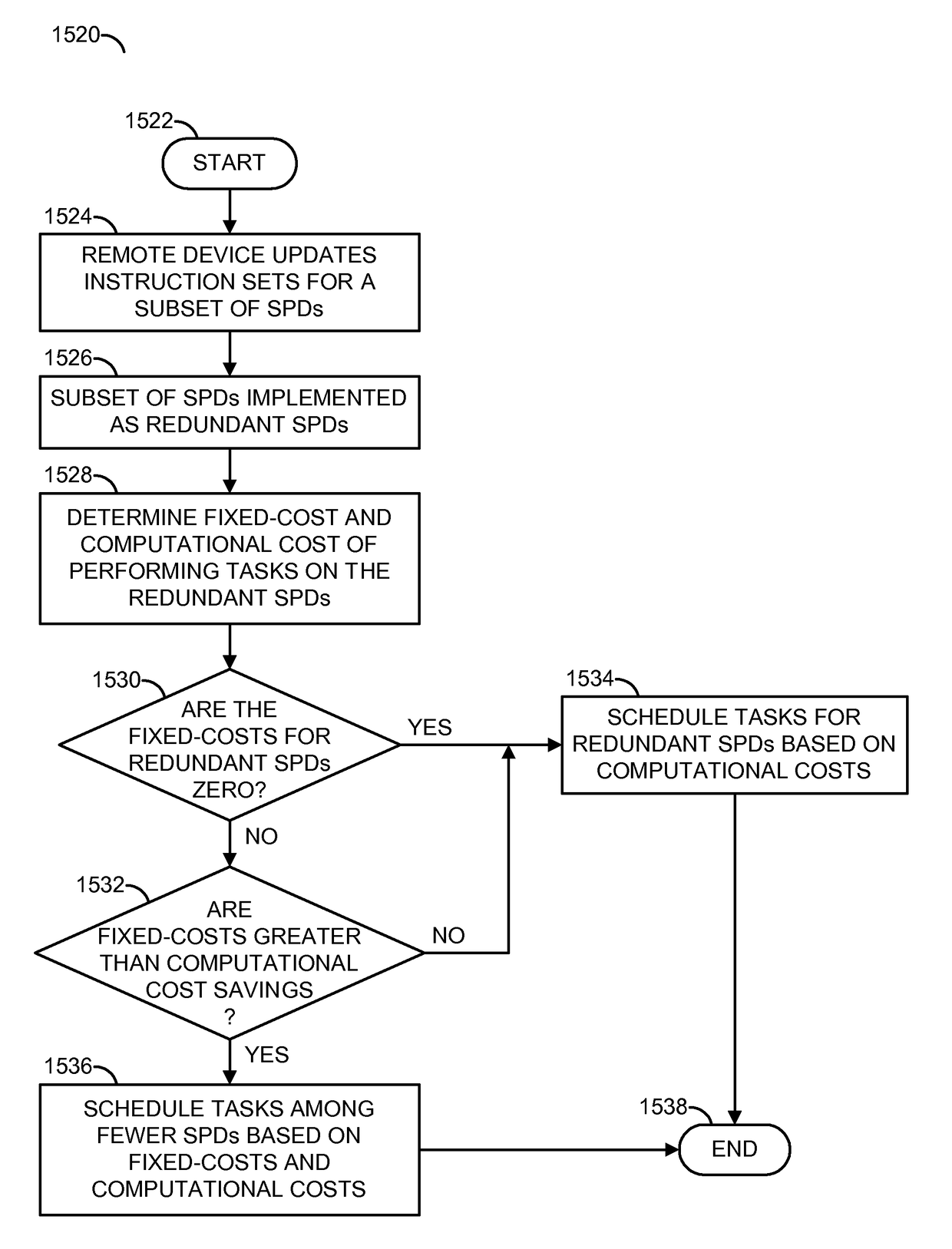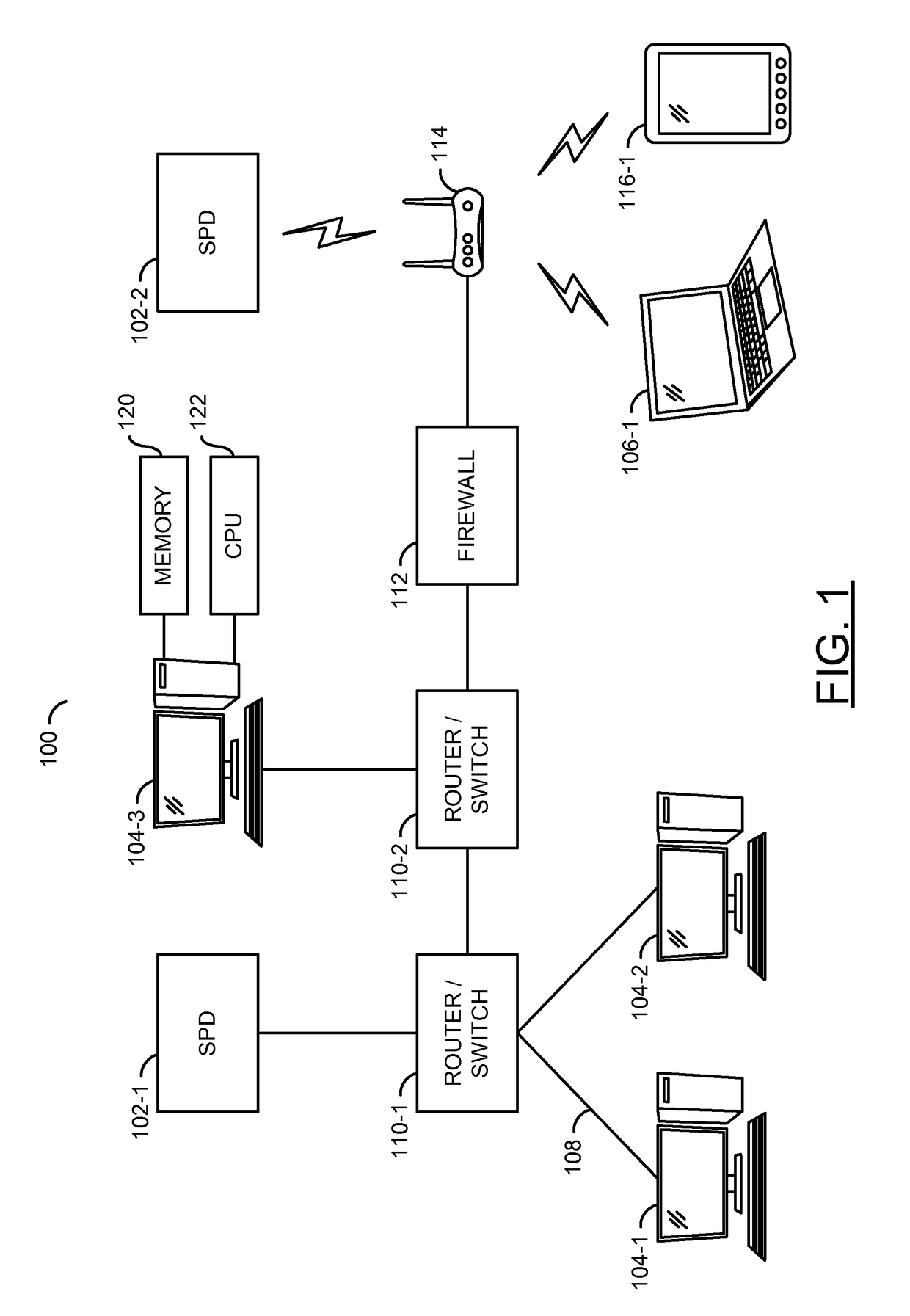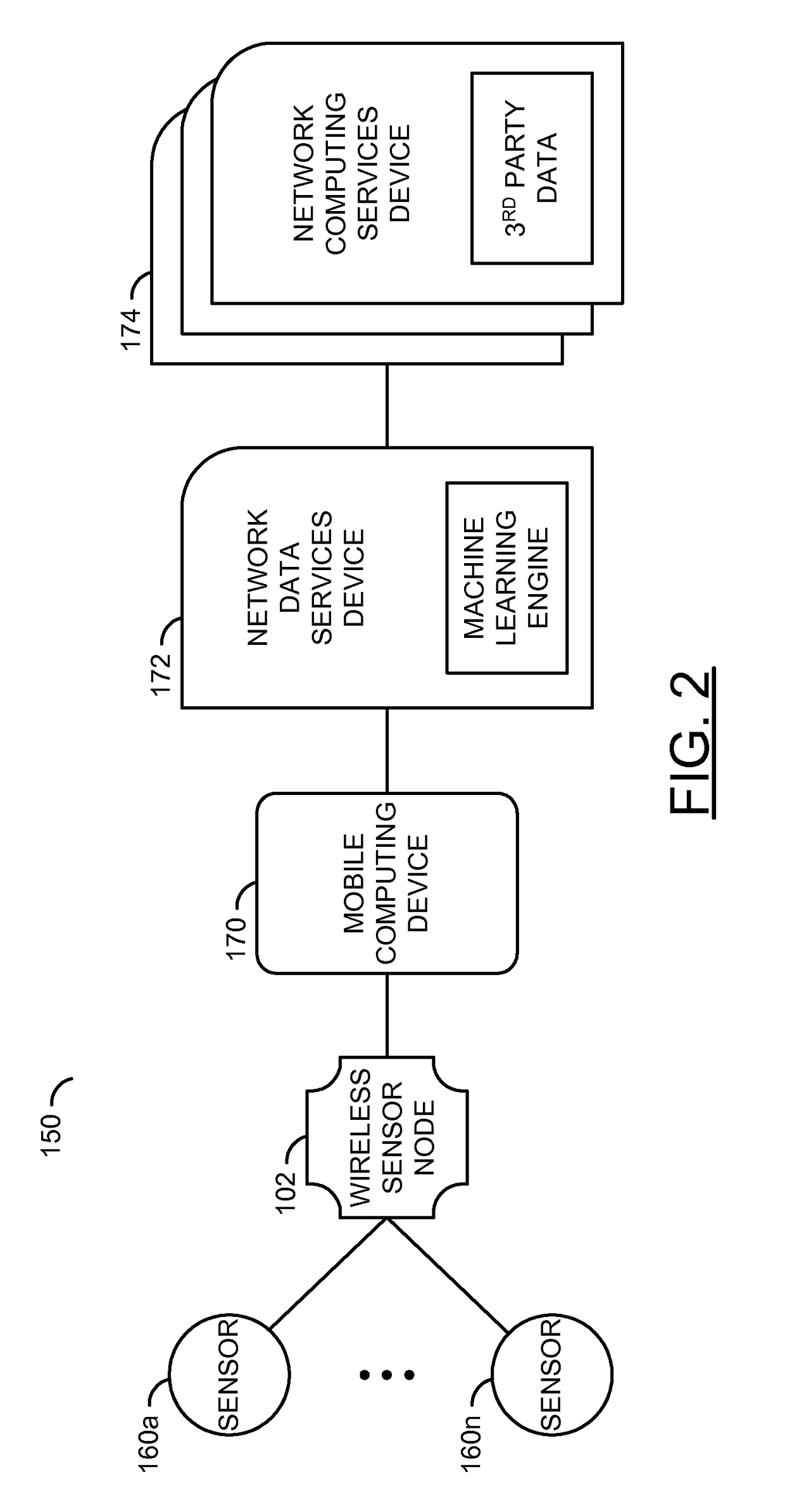Predictive power management in a wireless sensor network using activity costs
a wireless sensor network and activity cost technology, applied in the direction of climate sustainability, multi-programming arrangements, program control, etc., can solve the problem that self-powered devices may determine and achieve the effect of determining the computational cost of performing tasks
- Summary
- Abstract
- Description
- Claims
- Application Information
AI Technical Summary
Benefits of technology
Problems solved by technology
Method used
Image
Examples
Embodiment Construction
[0043]Embodiments of self-powered systems, devices, and methods are described herein. The self-powered system may include a computing device that selectively communicates with a self-powered device. The self-powered device may include: a circuit to power the self-powered device; memory; a processor; and a program mechanism that is stored in the memory for execution by the processor. The program mechanism may include instructions for selecting one of a plurality of modes of operation, including a first mode of operation in which the self-powered device consumes less than a pre-determined amount of power and a second mode of operation in which self-powered device consumes more than the pre-determined amount of power. (See FIG. 17).
[0044]Embodiments of the invention provide a context-aware and / or power-aware wireless sensor network system that enables application needs to determine which data is captured, transmitted and / or stored at the edge of the wireless sensor network. Such an imp...
PUM
 Login to View More
Login to View More Abstract
Description
Claims
Application Information
 Login to View More
Login to View More - R&D
- Intellectual Property
- Life Sciences
- Materials
- Tech Scout
- Unparalleled Data Quality
- Higher Quality Content
- 60% Fewer Hallucinations
Browse by: Latest US Patents, China's latest patents, Technical Efficacy Thesaurus, Application Domain, Technology Topic, Popular Technical Reports.
© 2025 PatSnap. All rights reserved.Legal|Privacy policy|Modern Slavery Act Transparency Statement|Sitemap|About US| Contact US: help@patsnap.com



